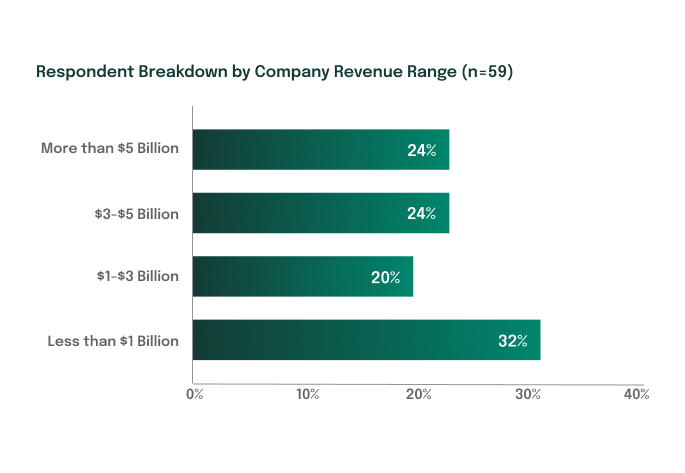The role of healthcare marketing has evolved dramatically in recent years. No longer limited to promoting services, marketing now plays an integral part in shaping patient experiences, fostering brand loyalty, and even driving operational efficiency. To better understand how Health Delivery Organizations (HDOs) are adapting to this evolution, a comprehensive survey was conducted between June and November 2024. Leaders from 75 organizations, including integrated health systems, academic medical centers, and health systems across 28 states, offered their insights. These findings were recently explored in depth during a recent MERGE webinar, where industry experts unpacked the survey results and shared actionable strategies for advancing marketing innovation maturity.
Download the Healthcare Provider Marketing Innovation Study
This study aimed to assess the marketing innovation maturity among HDOs, providing insights for accelerating transformation. The research focused on five focus areas:
- Strategic marketing and brand development
- Health equity and community engagement
- Experience maturity (patient, employee, and referring provider)
- Data-driven decision making
- Technological advancements
Using a maturity scale ranging from "Non-existent" to "Optimizing," organizations were evaluated on their processes and ability to proactively adapt to challenges. The findings highlight opportunities for healthcare marketing teams to rethink their strategies, elevate their roles, and substantially increase impact.
Overall Findings in HDO Marketing Maturity
The study revealed that HDOs score the highest maturity in strategic marketing and brand development. Efforts toward developing distinct value propositions, fostering internal alignment, and measuring performance are yielding results. Yet, this progress is uneven. Technology adoption, for instance, garnered the lowest maturity scores, signaling difficulties in effectively leveraging tools that enhance both internal operations and patient-facing experiences.
Interestingly, revenue size showed no correlation with higher maturity levels. This underscores that successful innovation is tied to organizational priorities, leadership, and culture rather than resources alone
*Please that note that the chart below is just one example of the key themes explored in the survey, not a complete overview.

The Omnichannel Challenge
Many HDOs rate themselves highly in omnichannel capabilities. However, most are currently optimizing cross-channel rather than truly seamless omnichannel strategies. While cross-channel ensures coordination across different platforms, omnichannel requires integrated, personalized experiences across all touchpoints—from websites to in-person visits.
Achieving this necessitates breaking down silos and centralizing data to enable seamless interactions. A key catalyst of this evolution is zero-party data, which patients willingly share for tailored interactions. However, ethical handling of this data is critical to protecting patient trust.
Marketing’s Role in Patient Experience
Marketing is increasingly recognized as a driver of patient experience innovation. Forward-thinking HDOs understand that marketing extends beyond advertising to influence every touchpoint in a patient’s healthcare journey. Yet, many organizations fall short of meeting consumer expectations shaped by industries outside healthcare.
Transparent communication, along with tools like intuitive portals, chatbots, and mobile apps, can improve convenience and build stronger patient connections. These not only empower patients by offering convenience but also strengthen loyalty by delivering on the brand’s promise of excellent service.
Clear KPIs and Internal Synergy
A common challenge among HDOs is the lack of clearly defined KPIs and cross-departmental alignment. Establishing shared, measurable KPIs tied to organizational outcomes encourages collaboration across marketing, clinical, and operational teams.
These metrics, such as improving patient retention or increasing service line growth, validate marketing’s organizational value. Success stories, when shared internally, highlight marketing’s impact on patient satisfaction and community trust, fostering broader collaboration.
Amplifying Community Impact
HDOs often underutilize community initiatives addressing Social Determinants of Health (SDOH) to strengthen their brands. Authentic storytelling paired with targeted outreach helps reinforce connections with patients and reflects a commitment to local communities.
Large health systems can effectively engage various communities by collaborating with trusted local organizations. Tailored messaging and strategic partnerships help these efforts resonate more deeply while showcasing their philanthropic impact.
Improving Referring Physician Experiences
Enhancing relationships with referring physicians offers untapped potential for patient acquisition and retention. Streamlining the referral process through digital tools improves efficiency and accessibility, while educational programs, networking events, and recognition campaigns foster trust and loyalty among these vital stakeholders.
High-value providers, in particular, benefit from tailored referral management solutions that save time while strengthening partnerships with HDOs.
Data Utilization and Technological Adoption
Collecting feedback is not enough if organizations fail to translate this data into actionable decisions. Many HDOs struggle to ensure collaboration across departments or uncover the “why” behind stakeholder sentiments. Incorporating qualitative insights alongside metrics helps guide strategic improvements.
Custom dashboards offering real-time, stakeholder-specific insights promote a culture of proactive decision making. On the technology front, successful adoption requires alignment with patient needs, organizational priorities, cultural change, and proper training to ensure meaningful outcomes.
Laying the Foundation for Growth
Advancing marketing innovation maturity calls for aligning marketing functions with brand promises and operational goals to enhance patient interactions, strengthen community engagement, and drive measurable success.
Discover the full scope of these findings by downloading the complete report, packed with practical strategies for sustainable growth. For a deeper understanding, watch our recent on-demand webinar, “Marketing Maturity Unleashed for Healthcare Leaders,” where industry experts expand on the survey results.
With plans for continued research every two years, MERGE is here to help your organization thrive in an evolving healthcare landscape. Contact MERGE today to learn how we can support your transformation and innovation maturity.

